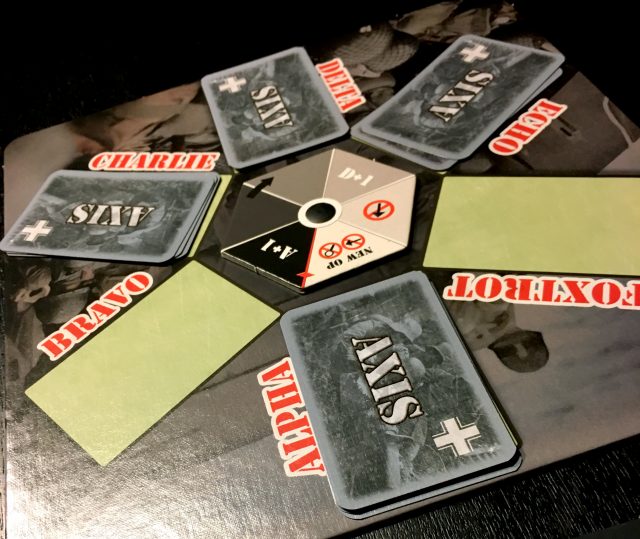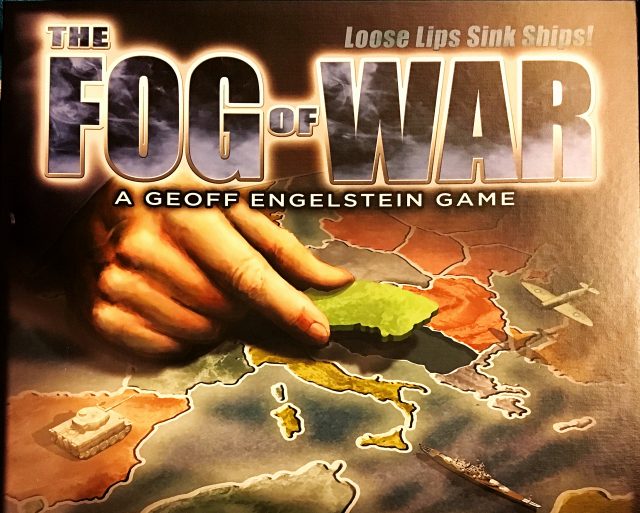My ten-year-old brain was already primed with a love of chess, go, and history when my summer-camp counsellor introduced my cabin to Panzer Leader. I became hooked on wargames. Not Doctor-Falcon-would-you-like-a-game-of-Thermonuclear-War wargames. More like this. Or this. Games about wars spanning continents and years. Maps split into little hexagons. Little cardboard chits. Thirty-two-page rulebooks. Games could take dozens of hours, split over several days. You might be surprised to hear this, but I hardly ever found people to play with. So I spent most of my time on the unfinished floor of my parents’ basement playing one side against the other in a kind of analog split-screen. I wasn’t into the gear or the uniforms—and certainly not the ideologies (except from a historical standpoint). No, I loved the idea of simulating history, being in the driver’s seat and seeing how things went together.
Of course, even back in the day, most designers knew tabletop (or basement-floor) wargames weren’t always great simulations because a crucial element was missing. Too much information was open. Both players (for most of these games were two-player-only) could see the map, the counters, knew the combat result tables inside-out, and could often plan their moves with mathematical near-certainty.
But as any student of Fallout knows, “War never changes.” Effective commanders know how to deal with “the fog of war”, and  great ones know how to take advantage of it using a mixture of bluff, courage, and canny risk-taking. At the strategic level, faking out the enemy reached new heights during WWII. For instance, the Allies spent significant amounts of resources on elaborate ruses like Operation Mincemeat, which included dumping a waterlogged corpse with faked papers on a French beach in an (ultimately successful) attempt to fool the Axis into defending Sardinia instead of the actual intended landing site of Sicily.
great ones know how to take advantage of it using a mixture of bluff, courage, and canny risk-taking. At the strategic level, faking out the enemy reached new heights during WWII. For instance, the Allies spent significant amounts of resources on elaborate ruses like Operation Mincemeat, which included dumping a waterlogged corpse with faked papers on a French beach in an (ultimately successful) attempt to fool the Axis into defending Sardinia instead of the actual intended landing site of Sicily.
Unfortunately, the world of WWII espionage and intel, though sexy in the movies, has historically gotten the short end of the stick in wargames. It’s usually been handled with a lot of bookkeeping, scribbling and erasing on pads, peeking at inverted counters… it’s fiddly. As a result, WWII games simulate the military and economic aspects of the war admirably, but because they lack that feeling of just not knowing, games tend to play out predictably, along historical lines.
Geoff Engelstein’s The Fog of War gets it right. It is WWII in Europe where everything is blurred out except the intel, which itself is abstracted and simplified almost to the point of absurdity. And yet playing the game feels more accurate and truthful than a more detailed simulation, and can be played out in two hours or less.
I will admit that when I first saw the game I passed it over on the basis of its cover and what I saw of its board. The cover looks like someone completing a jigsaw puzzle where the pieces are European countries, which I used to love as a kid—and which misled me into thinking it was a kids’ game. And then there was the board, which looks on the surface like a mix of Risk and Monopoly. #neindanke
I should have looked more closely, especially since the designer, Engelstein, has already established himself with projects like The Ares Project and the Space Cadets series.
The game covers the period from January, 1940 to December, 1944, where each turn is a year. You heard me, the game is five turns long (take that, War in Europe). On a given turn players go back and forth taking actions until either both pass or both run out of cards. Then production is tallied, players build and rebuild, and the Axis tallies VP’s. If the Germans amass 70 VP’s, it’s Man in the High Castle. If the Allies occupy the Reich, our timeline is (basically) preserved. Otherwise the game continues. At the end of the final turn the outcome hinges on whether the Germans fulfil their secret Victory Conditions chosen at the beginning of the game—less satisfying, perhaps, but from a game design standpoint it helps the Axis try to bluff their way out of a loss.
Armies, navies, and airfleets are represented by Troop cards of varying strengths. The Axis start off with a whopping big deck but receive no new cards after the end of the first turn; the Allies, on the other hand, start off with weaker troops but gradually cards are added as Russia and the US come to the aid of beleaguered Britain. They also (unlike the Axis) have several zero-strength “dummy” Troop cards which are the backbone of their bluffoonery network—and prevent the war from ending in 1941.
 But it is the way that territory is handled that makes the game. Although a regular map of Europe (divided Risk-like into blobby regions) dominates the centre of the board, players do not place their troop cards there. Instead, there is a ring of spaces around the map (the “Monopoly” part) with one space per map territory; this is where the troop cards live. Although somewhat confusing at first, the alternative would have been to have a huge map large enough for the cards to go on the map, which was clearly not feasible, so I salute Engelstein for this compromise. Since troop cards are played down, neither player knows precisely how much the other has committed. And because combat is totally deterministic (either the Attacker has or doesn’t have twice the strength of the Defender), the mixture of face-down cards and Allied dummies introduces the necessary risk and uncertainty to make the game a Game.
But it is the way that territory is handled that makes the game. Although a regular map of Europe (divided Risk-like into blobby regions) dominates the centre of the board, players do not place their troop cards there. Instead, there is a ring of spaces around the map (the “Monopoly” part) with one space per map territory; this is where the troop cards live. Although somewhat confusing at first, the alternative would have been to have a huge map large enough for the cards to go on the map, which was clearly not feasible, so I salute Engelstein for this compromise. Since troop cards are played down, neither player knows precisely how much the other has committed. And because combat is totally deterministic (either the Attacker has or doesn’t have twice the strength of the Defender), the mixture of face-down cards and Allied dummies introduces the necessary risk and uncertainty to make the game a Game.
Each player also has a deck of Province Cards, one per territory on the map. The Cards are used to track ownership, so that each player can easily see who owns what. The more important use of these cards, however, is the piece de resistance (#historypun) of the game’s design: the Operation Wheel.
You see, unlike Risk, you cannot simply point at a stack of pointy plastic arrows and sic’em on a neighbouring Province. No, you have to create a new Operation as an Action by choosing a target Province (selecting it from your deck) and adding some Troops from your hand, placing them face-down on your Ops wheel and letting it simmer for at least a couple of Actions (with the Wheel rotating each Action) before you can Launch it. During that simmering time, your opponent can spend Intel points to have a gander at some randomly-chosen cards from that pile. You can counter by spending your own Intel points—but you might need those points later in the turn to gather your own Intel.
They find out the target; they may find out some of the Forces you committed are dummy cardboard tanks (naughty). Or they may draw the one awesome fleet you added and start shitting their knickers because they have NO IDEA where that fleet is going. If, indeed, it goes anywhere; you are allowed to let Operations die on the vine—and in fact must do so if the target Province is no longer accessible.
This, then, is the heart of the game, and makes the game a worthy addition to the library of anyone interested in WWII. Don’t let the box art and simplistic-looking board fool you as it did me. It may not have fancy-shmancy plastic tank models, pages of political-economic rules, or complex to-hit tables. But it perfectly captures the cat-and-mouse bluff-and-double-bluff nature of the conflict, in a simple and innovative way that recalls the brinksmanship of Twilight Struggle but in a totally different way.
[…] of War: back in January I wrote about this recent design which is not heavy on historical detail but does a great job of putting you […]